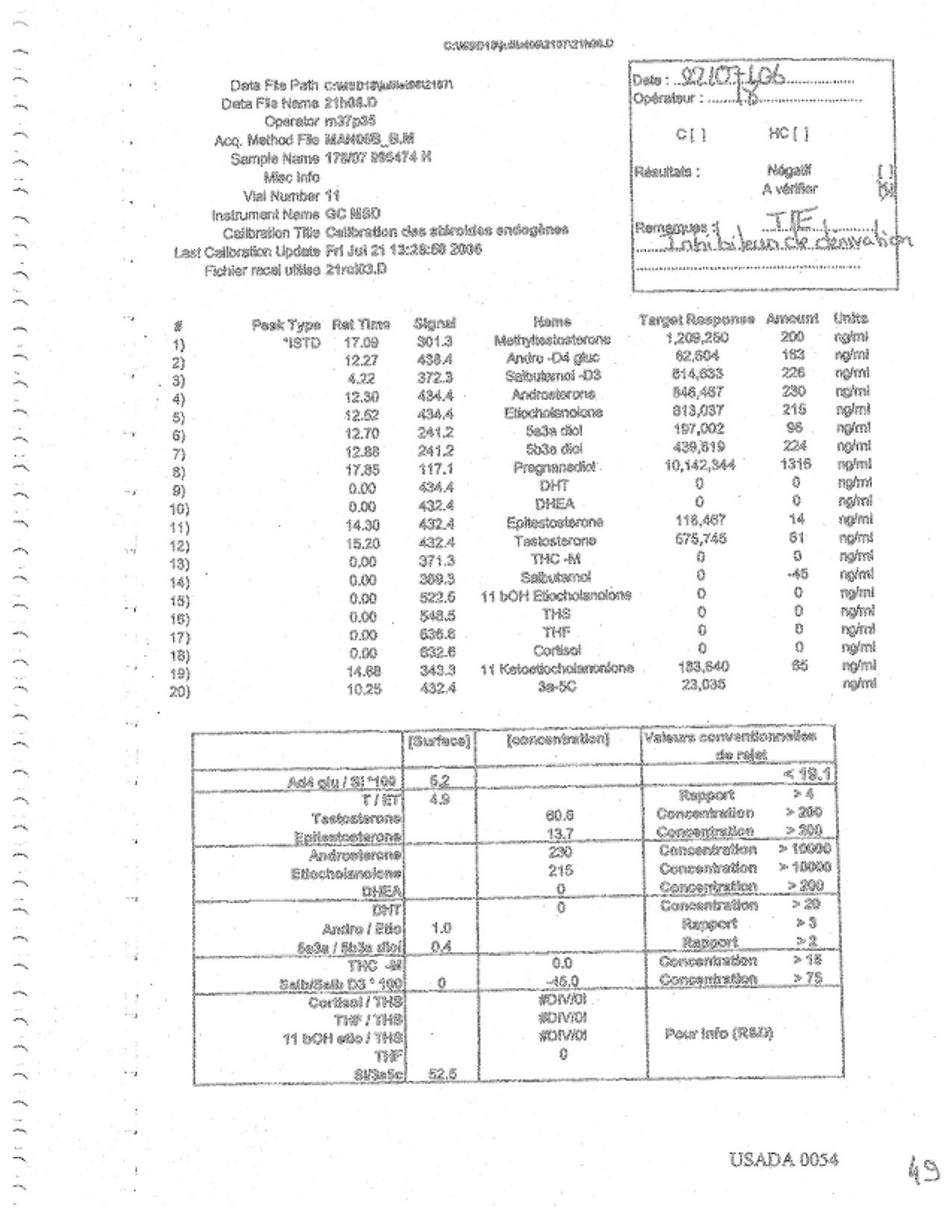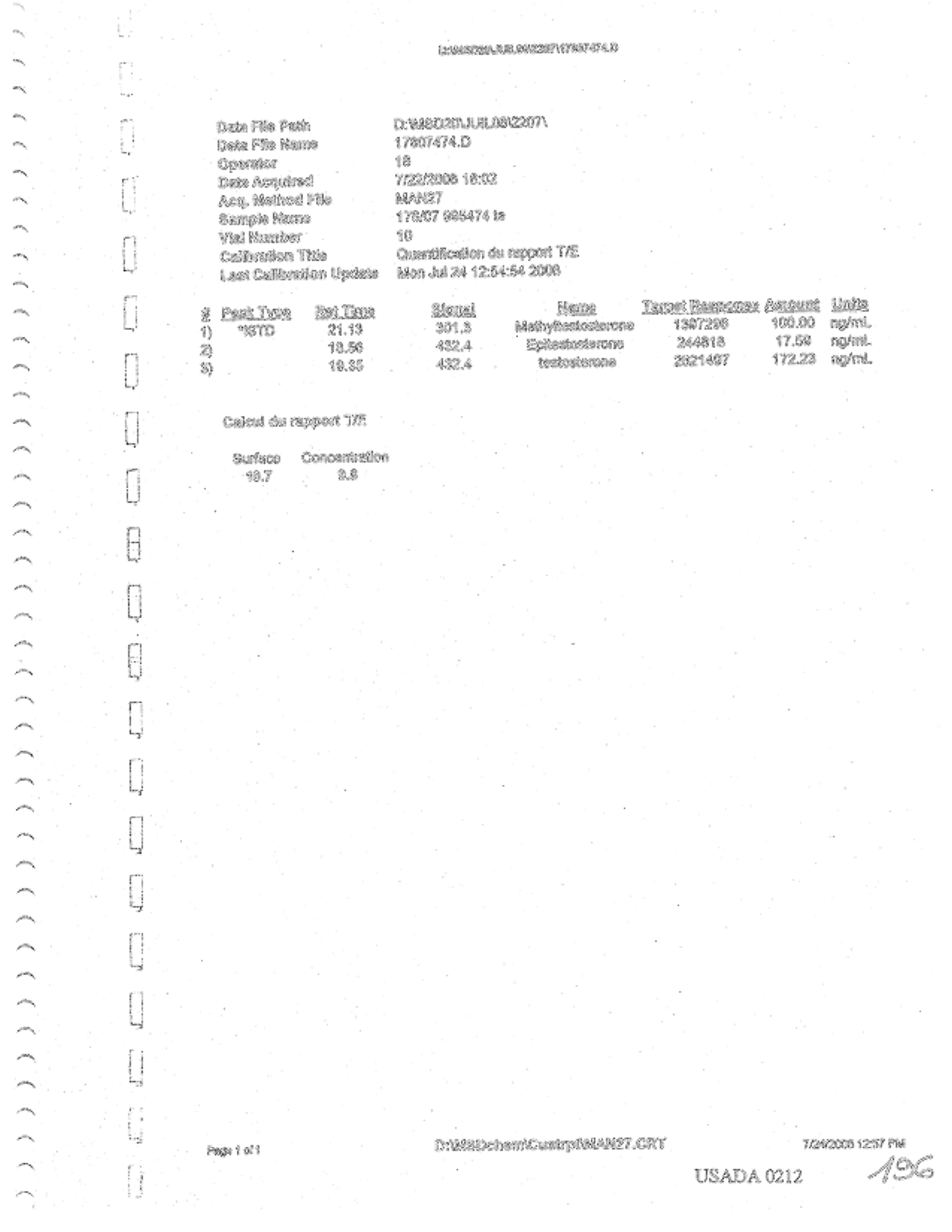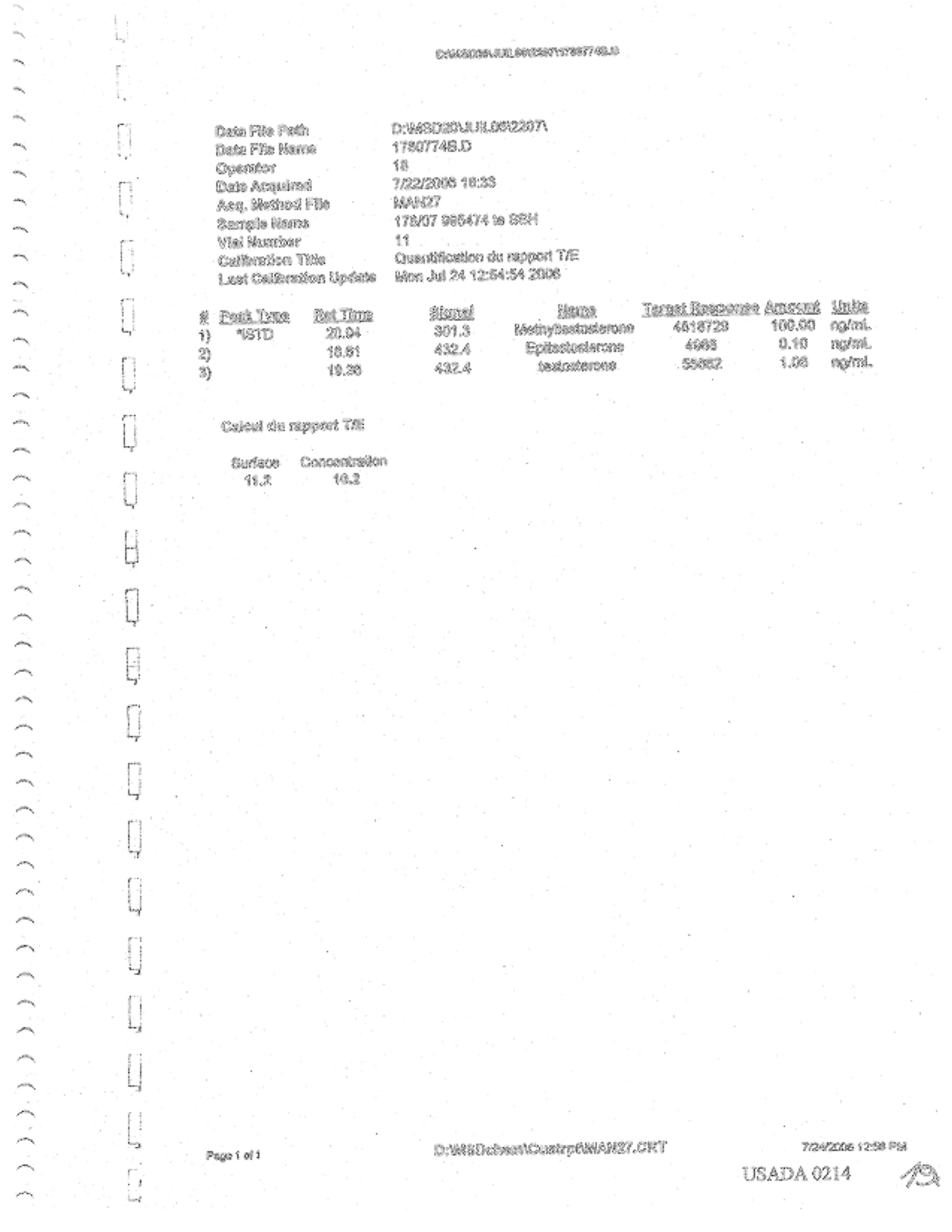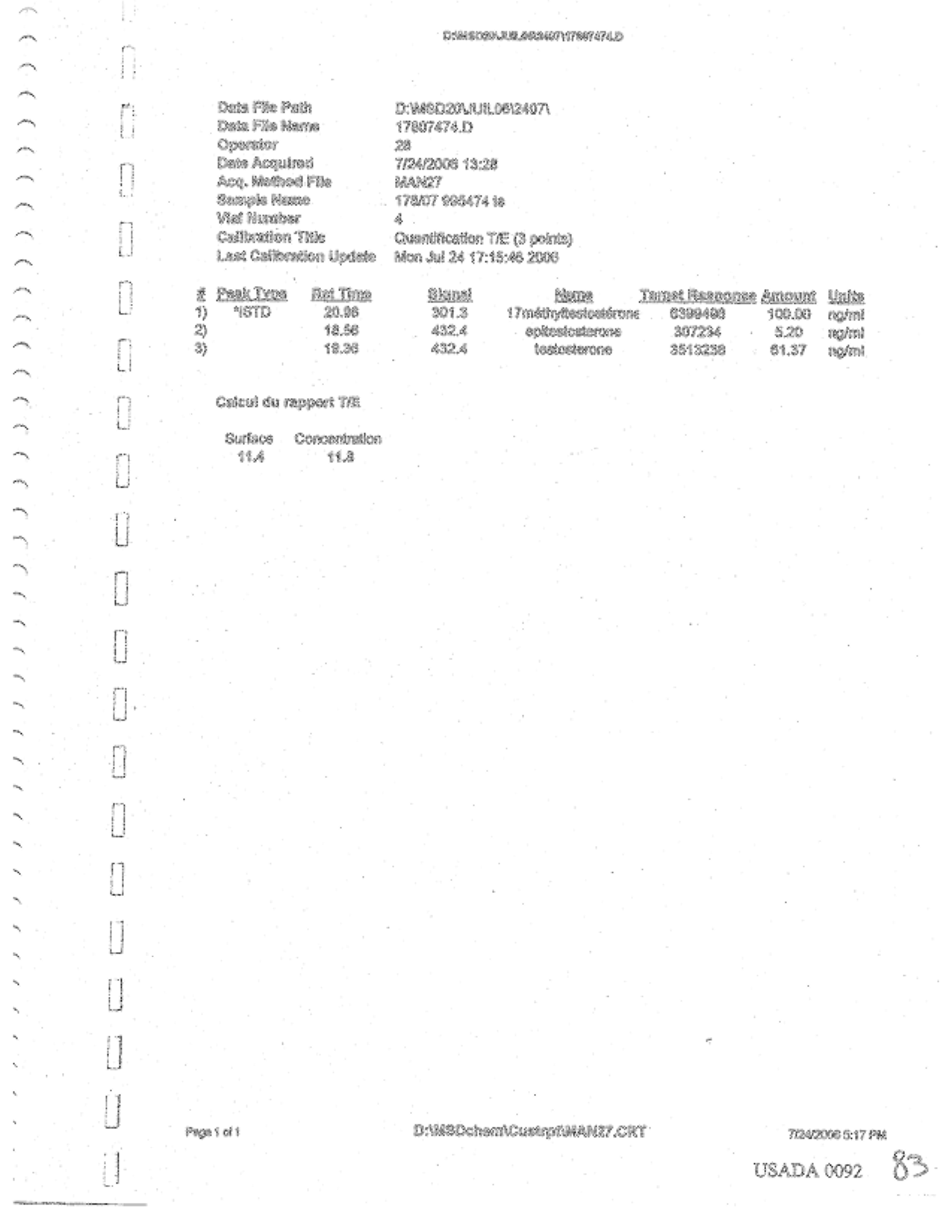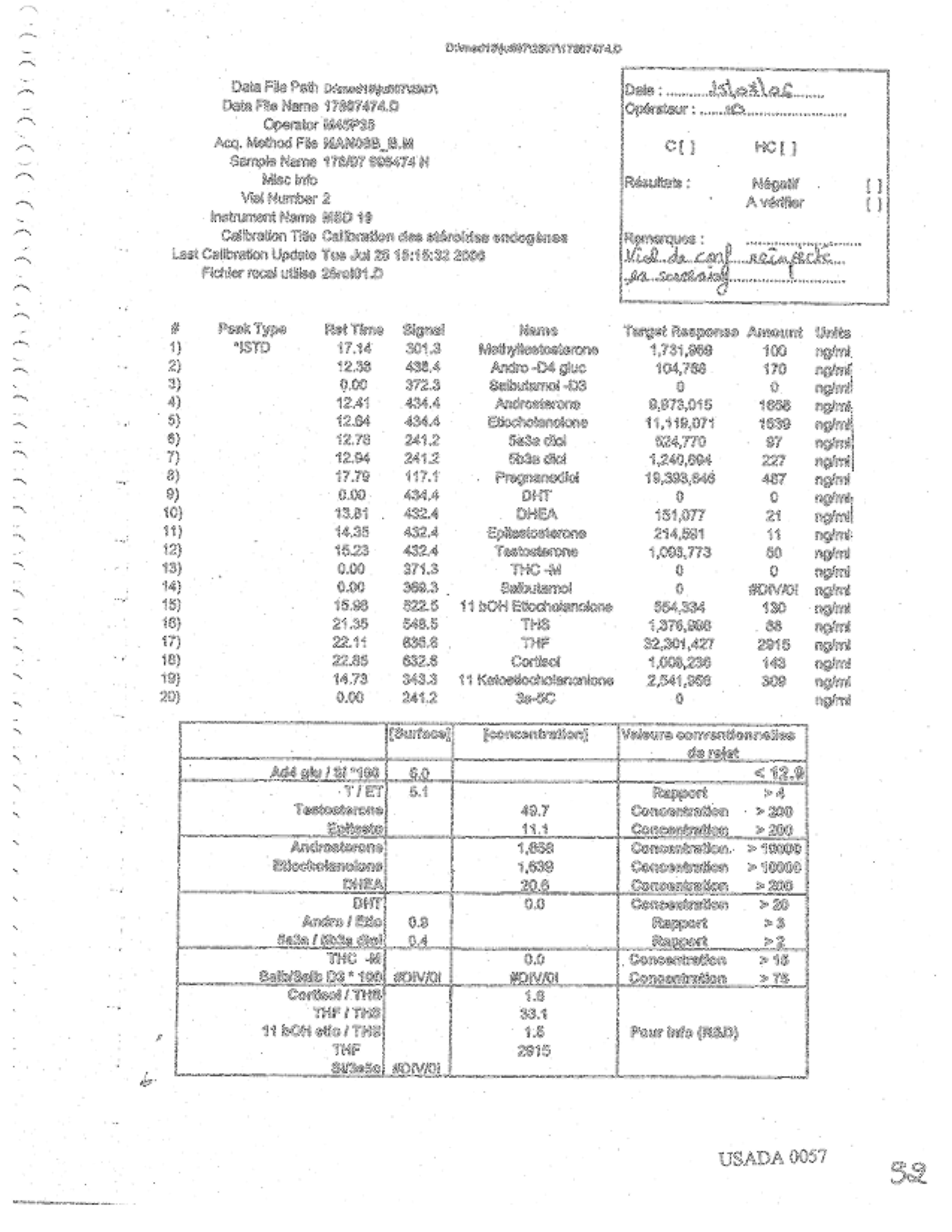Hey, it's the 29th, and time for another TBV Monthly Report!
Long time readers may know the itch to create TBV was caused by an earlier blog on the topic, Free Floyd. Just about the time TBV started getting into it, Free Floyd went sporadic, and then on hiatus. It turns out that Free Floyd had a pressing real life that included having a baby and finishing his thesis. He's done that, and recently resurfaced with some email asking, "what's up with things Landis?"
Killing two birds, this monthly report is for bringing Free Floyd up to speed...
[More]
Yo! Free!
Since your last post on Sept 9, a whole lot has happened. A lot of it is covered in the TBV Quarterly Report from last month, which isn't a bad place to start, but here's a quick summary.
(I've added all the links I think are relevant in updates since first published.)
September
In September, the first procedural phase of the case happened. Jacobs filed a submital to the Anti-Doping Review Board (ADRB) to dismiss the case, which was rejected, and the case was referred on towards a hearing. We have still not empaneled the arbitrators for the hearing, though we believe they have been selected. Landis had his hip surgery, which seems to have worked out very well - he recently did a 4 hour ride feeling good.
When you last left us, the announcement of TUEd positives at the Tour had been the first public backpedaling by the federations and the ADAs that things were not quite as clean and simple as they had put out for public consumption immediately after the Tour. It's gotten more complicated since.
Emailer Paula started sending us tips so frequently we asked her to help do the daily roundups, and she's saved me from going truly fruit-batty by starting it in the wee small hours. Yay!
October
In October, there was lots of very visible stuff, and a lot of backstage maneuvering the public didn't know about. After the ADRB rejection, some things were leaked to TBV that we called the "ferret documents", and a number of readers puzzled them into coherency, in particular Marc who did heroic duty and is now an occasional Correspondent for TBV. This constructive reaction seemed to have encouraged the leaker, who sent more, and finally revealed himself to be Landis. I think "the ferret" doesn't sound as good as "the badger", so I've had regrets about using the name.
On Oct 12, Landis released a pile of documents to the public. It included 370 pages of "charging document", being the Laboratory Documentation Package as assembled by USADA, the submission to the ADRB, and a powerpoint slide show outlining the public defense. The slide show was done by Arnie Baker, MD, Landis' long-time coach in Southern California. TBV got a huge traffic spike by doing full coverage of this release, and arranging mirrors at archive.org.
Just before the release, Landis started to personally camp out at the Daily Peloton Forums, taking questions and warming people up to look at the stuff that was released. With uncertain credit for the actual coinage (Landis or Baker), this internet engagement was been called the "wikipedia defense", even though there was no actual Wiki. Landis has stayed at DPF off and on since -- from time to time going house-crazy and posting some pretty pointed comments. He's occasionally joined there by Will Geoghegan, his manager.
After the document release, the defenses offered have been dissected, resected, inspected, accepted, rejected, and conflicted in discussions all over the internet, but most usefully at DPF. In an attempt to collect some sense of it all, a real Wiki was created by Tom Fine, and it contains a good snapshot of the arguments as known.
It's hard to say if the release has affected the public at large, but it has caused many of the people who have looked to engage in some reflection. A lot of people remain very skeptical of Landis's arguments, and still believe the ADA claim he doped. Most people who haven't been paying any attention are still stuck with the initial media impression he's guilty. Still, there has been a seeming shift towards favorable attitudes by many fence sitters.
November
In November, a lot of public things happened. First, we found out about a lot of the backstage maneuvering that had been done in correspondence between Landis and the USADA. This documented a progression of USADA appearing to be reasonable, then over time hunkering down and playing hardball, denying Landis documents known to be in it's posession, and playing semantic games with the definition of a public hearing. This raised questions about their motivations, whether they were seeking the truth, or just trying to score a case win no matter what.
The next week, a scandal erupted with the LNDD announcing that a "hacker" had broken into their computers and stolen documents. They said a criminal complaint had been filed with the police. Their documents were apparently sent to various media outlets and official bodies by a would-be whistleblower, some by email, some via the post-office. It is not known who got the documents from the lab, or who sent them. The initial L'Equipe report claimed that Landis was somehow involved in the hack, but this has not been substantiated; one interview with an investigator suggested the UCI was involved somehow as part of its spat with the Tour organizers.
The initial report of the hack also has LNDD claiming that the documents passed on were either "taken out of context" or were "forgeries", and perhaps most damning, in bad French with spelling errors. This was used as justification for the "Landis did it" line of reasoning.
Later in the week, Sam Abt of the International Herald Tribune wrote a piece about the documents that said he'd gotten an envelope in the mail, posted from a suburb near the LNDD. He thought the documents looked pretty authentic, consisting of various pieces of mail or email that LNDD has sent various sporting federations admitting to different errors in tests they had referred as AAFs. The mistakes included attributing results to wrong athletes, having contaminated references, and just making operational errors that invalidated the results.
Mr. Pound's response all was to complain that things were apparently obtained illegally. He never commented on the substance of the documents. This contrasts sharply with his behavior in the LNDD/EPO/Armstrong/L'Equipe affair, where he expressed no concerns about how things were put together, and wanted Something Done about the apparent conclusion that Armstrong may have used EPO in the 1999 Tour. There it was what the documents showed, not how they were obtained that mattered. With documents that impeach the lab, it is how they were obtained that matters, not what they say.
At the end of that week, Dr. Baker delivered Slide Show 2.1, which clarified things from the first version, and added some of the whistleblower material as interesting if authentic, which is not known. This got the same dissection as the first version, with no significant changes in conclusions.
[At the end of the month, Rant named the hacker/whistleblower "Le Radoneur" (The Rodent), which we'll use from now on.]
Status
As we've known all along, the case divides into two parts. The discipline case is what will be decided at hearing. There is also the public relations exercise, where Landis needs to fight to rehabilitate his reputation, assuming he wins the discipline case.
On the discipline case, we almost have arbitrators, and the hearing isn't scheduled, and now seems unlikely to happen before February. Getting the panel started and doing the schedule are the next procedural steps.
What Landis has released publicly is not completely convincing to a lot of people, including TBV. Two of the arguments made in the Baker slide shows, "variability" and "contamination" seem to be wrong. A better argument is made by "Duckstrap" at DPF, where he thinks LNDD identified wrong peaks in the spectrogram of the TE IRMS results and got wrong numbers. This may or may not be related to Landis' Cortisone. There is raging legal and scientific debate about the IRMS CIR result that LNDD declared positive proof that Landis has exogenous testosterone present. LNDD found two of the four metabolites they tested positive over the 3.0 limit, with one at 3.8 and another at 6.1, and said that makes a positive. Landis has argued a number of points against this. Other WADA labs with published positivity criteria would not have declared these results positive; that all four tested metabolites need to be positive to be conclusive by the rules; that all four need to be positive by the scientific studies; that the 3.0 is probably too strict a cutoff given the validation data seen in the studies; that the patterns seen are inconsistent with any data reported for negative and positives in any of the studies, suggesting procedural errors at the lab. Landis also claims to be saving some important things he'll only reveal when he needs to, but can't know until it is produced. It is not yet clear to anyone how valid these arguments are, and we probably won't find out until they are presented and rebuttal done at the hearing, and a conclusion is made.
At the PR level, a lot of people have developed an unease about the Anti-doping testing and discipline process they hadn't felt before. Landis' public release of documents has opened the sausage machine to scrutiny, and it isn't looking as infallible as people had been led to believe.
Summary
The case has become every bit as political as people thought it would be, with the credibility of the existing agencies very much on the line. An interesting question is, if Landis is innocent and found to be innocent, how can the ADAs spin the result in a way that leaves them any respect? If they go to the wall and lose, they are in deep trouble. If they thought he might be innocent, they could probably reframe the issues in a way that made them appear to be truth-seekers. This would leave them a path for retreat. Thus, a lot rides on how much the ADAs really believe their own case. There have been plenty of suggestions it's not the best case for them, and they don't have a passive target who will roll over.
[A suggestion in comments to this post says the answer for the ADAs is simple: scapegoat LNDD while claiming the system is fine. To do pull that off, they'll have to explain the lack of audits and oversight of LNDD, and use it as an excuse to add more oversight along with a request for a big budge increase to cover it. Perfect! The ideal bureucratic solution.]
Are the ADAs capable of taking a step back and really evaluating the public interest, their own interest, and the interests of sport and the athletes? It would be tragic in many ways to find they've become locked into a position where they can only go for a "win!", or die trying.
Editorial Note
The staff of TBV is aware we're all tilted towards hope that Landis can prove himself innocent, and our bias can skew the coverage in non-objective ways. As they used to say in broadcast media during the days when the Fairness Doctrine was in effect (eg: pre-FOX News), if a responsible party with opposing views would like to submit articles, we'd love to hear it. We've been saying this for a while (see the sidebar on the right), but have had no takers. This offer remains open, and will not expire until TBV does.
[end]
Full Post with Comments...
 Floyd Landis Pacetti
Floyd Landis Pacetti



